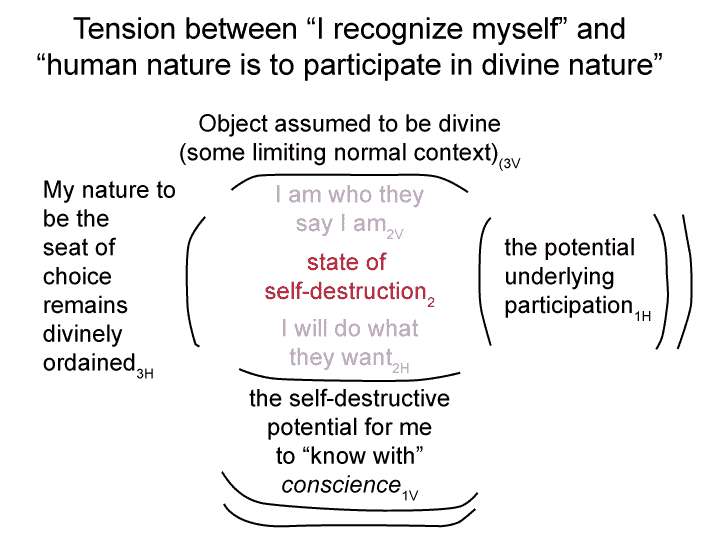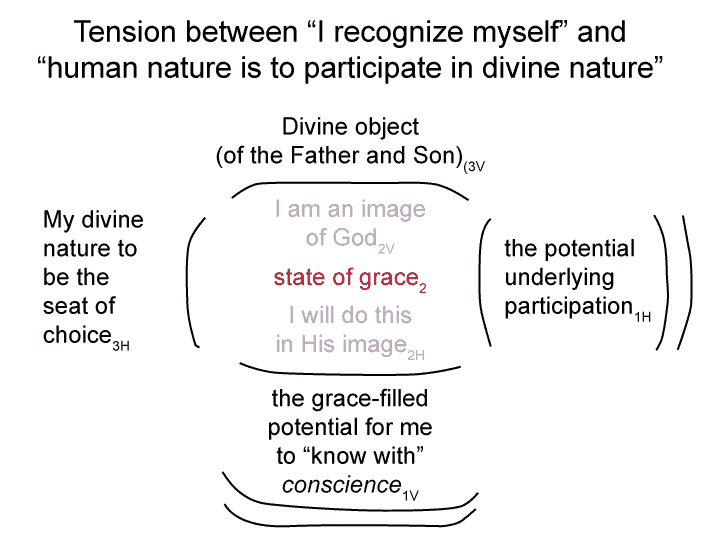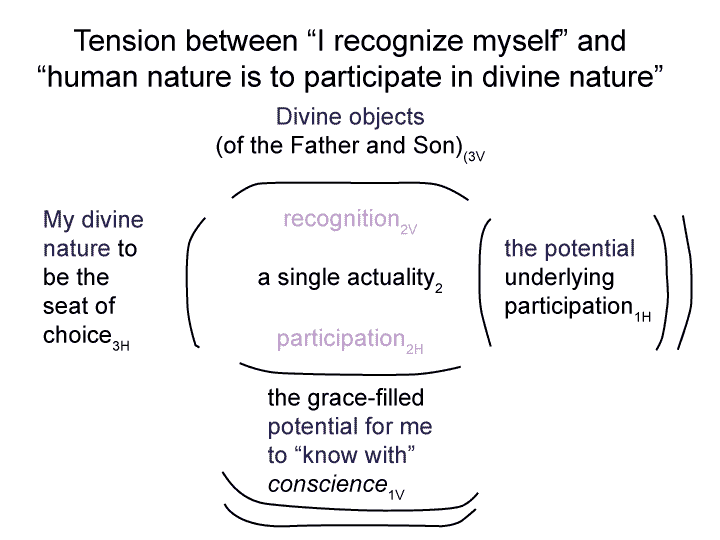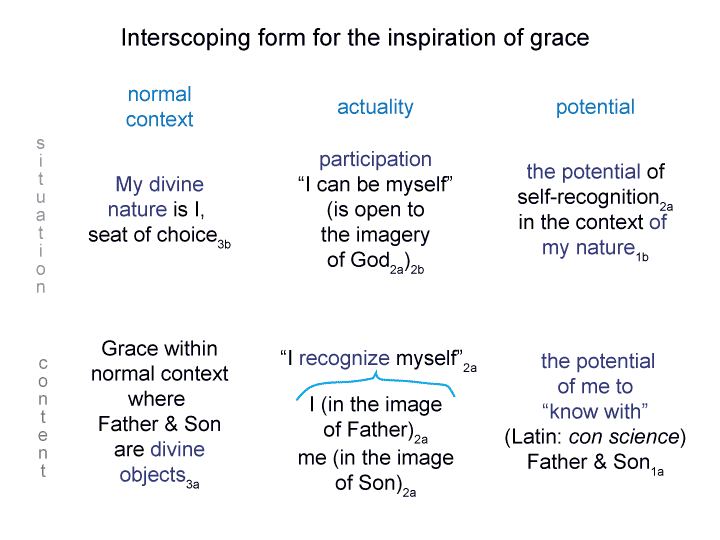Summary of text [comment] pages 68 and 69
[What happened?
The content-level normal contexts juxtapose.
The normal context of one (2.1 DE) is:
Grace contributes to bringing I recognize myself into actuality.
That actuality is something, where something is: I am an image of God.
The normal context of the other (2.1 DH) is:
Grace sets the Father and Son as divine objects.
The actuality is something, where something is: I recognize myself.
The actualities are very similar, but they are not identical.
Note that normal contexts are exclusive, so if I go from one to the other, I feel like I am flipping a switch.
So, what happened?
I brought two normal contexts close together in order to step from one to the other. The fact that they are similar allows proximity. The fact that they are different means that the step is a discontinuity.]




